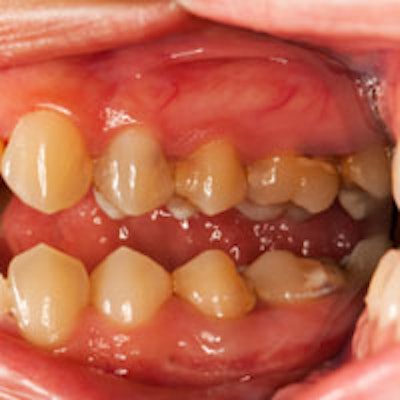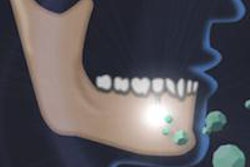
Dental implant technology is improving steadily as materials and the understanding of osseointegration advance. That reality is having an inevitable effect on treatment planning. But when does it make sense to abandon treating a natural tooth and place an implant?
Researchers who completed a systematic review of long-term tooth and implant survival rates believe that a more conservative approach could be warranted that emphasizes treating the tooth over extracting and replacing it (Journal of the American Dental Association, October 2013, Vol. 144:10, pp. 1119-1133).
The findings could serve as a counterbalance in the minds of practitioners to a development in dentistry that has been gaining momentum, according to lead researcher Liran Levin, DMD, an assistant professor in the department of periodontology at Rambam Health Care Campus in Israel. Levin is also affiliated with division of periodontology at the Harvard School of Dental Medicine in Boston.
Trend toward extraction
"There is a recent trend to extract diseased teeth and replace those with dental implants," Dr. Levin explained in an email to DrBicuspid.com. "This trend might be related to the perceived high implant survival rate and the rather safe nature of the procedure."
But Dr. Levin believes that a review of the available data indicates that preserving teeth by proper periodontal treatment and a careful and frequent maintenance program will probably give the same, and even better, results for the long run, without requiring a dental implant placement, which is not without risk.
Putting the brakes on the trend begins with the evaluation stage. Assessing the tooth in question for the appropriate treatment is complex, with a host of factors influencing the outcome. But all means of treatment should be considered before resorting to extraction and implant placement, according to the researchers.
"It should be noted that implants are a great solution for replacing missing teeth," Dr. Levin noted. "They have changed dentistry profoundly; but, their availability shouldn't be a cause or reason to extract a tooth rather than treating it properly."
There is also a dearth of information about the performance of dental implants in young patients over the long term, which calls into question the prudence of placing them in these patients.
Choosing relevant studies
For their review, Dr. Levin and a colleague searched for studies in Medline that pertained to the long-term survival rates of compromised teeth and dental implants.
"This is one of the first reviews comparing the long-term survival of dental implants as opposed to properly treated and maintained teeth," Dr. Levin noted. "This is not an easy task since the available data is not always complete and usually report only short-term results, which are with limited value compared to our patients' life expectancy (five-year results are very short term for a 30-year-old patient going through tooth extraction and implant placement)."
Consequently, the researchers only included studies with a follow-up of 15 years or more that also had five or more cases in them. Due to significant variation in the design of each study, the researchers could not complete a meta-analysis. Ultimately, they included nine studies pertaining to compromised tooth survival 15 to 30 years after treatment and 10 about long-term implant survival 15 to 23 years after treatment.
"When assessing the general loss rate of teeth and implants over follow-up periods of at least 15 years, we found a range of 4% to 13% for tooth loss and a range of 0 to 33% for implant loss," the researchers wrote. But teeth that were classified as "hopeless" or "questionable" had a much higher loss rate range of 20% to 62%. For example, "hopeless" teeth affected by chronic periodontitis and aggressive periodontitis had loss rates of 34% and 41%, respectively, in one study (Journal of Clinical Periodontology, August 2011, Vol. 38:8, pp. 707-714).
Interestingly, in their review for this study, Dr. Levin and his fellow researcher observed that "the results . . . indicate that the overall tooth loss rate and the tooth loss rate for compromised teeth (on the basis of the initial prognosis) were not affected by aggressive disease when the teeth were properly maintained."
Clinicians should take note. "Teeth presented with periodontal disease (the number one reason for tooth extraction in the adult population) can and should be treated before deeming them for extraction," Dr. Levin explained.
The researchers also noted the increase in risk of peri-implant infections with each additional implant placed.
"Many of the implants placed (about one of five) will result in peri-implant disease -- a disease with no apparent criterion standard treatment -- at some point," the researchers wrote. Patient-related factors such as smoking and diabetes also take their toll on survival rates.
Dr. Levin urged clinicians to carefully consider the nature of the implant treatment option in dentistry.
"It is our role as dental professionals to treat teeth and not to replace them with something else," he explained. "First, make sure you have treated properly the underlying disease and achieved a disease-free or stable condition. Only then re-evaluate which teeth are definitely hopeless."
Cautious evaluation with a priority on preserving the natural dentition will result in better dentistry, according to Dr. Levin.
"Due to the fact that accurate tooth prognosis evaluation is still (and might forever be) unavailable, a more humble and less aggressive approach should be adopted trying to preserve more and extract less," Dr. Levin concluded. "The next steps are trying to accurately compare other treatment modalities with or without dental implants for the long-term."



















